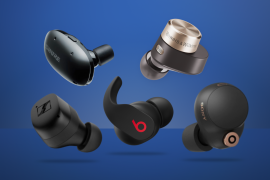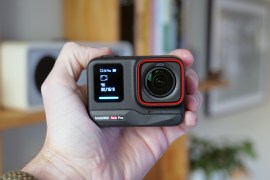DJI Mini 4 Pro review: Ultralight fantastic
DJI’s smallest and most sensible drone gets updated
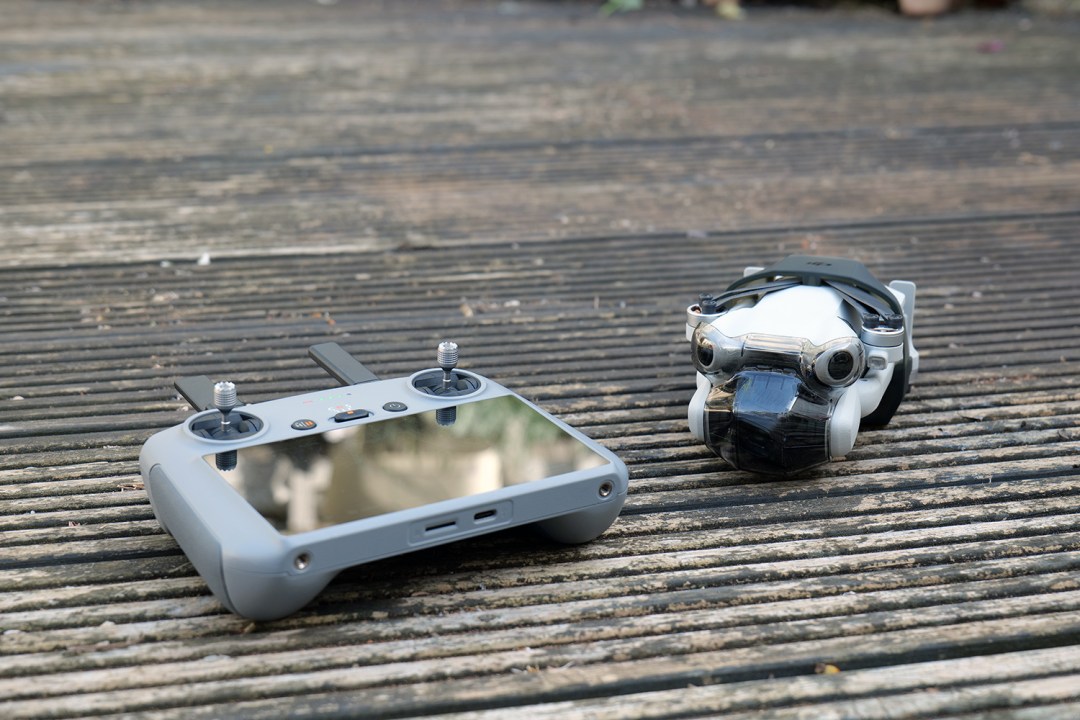
Stuff Verdict
The most powerful sub-250g drone around, and the most practical drone for UK-based users
Pros
- Restriction-dodging low weight
- Strong camera performance
- Easy flight controls and long battery life
Cons
- Small doesn’t mean cheap
Introduction
We know what you’re thinking: here’s yet another DJI drone, arriving only 18 months after the Mini 3 Pro and about six after the vanilla Mini 3. Given that we awarded both a full five stars, and both are still currently on sale, can this new arrival really be any better?
Cool your jets, flyboys and flygirls. Because, while the DJI Mini 4 Pro undoubtedly represents measured evolution rather than all-out revolution, it does promise several meaningful camera and usability upgrades over the Mini 3 Pro – and doesn’t actually cost all that much more than the older model (at the time of writing, the difference in the basic packages of the two is a piffling £50).
So which is the DJI Mini 4 Pro: another firm nudge towards ultralight drone perfection or a trivial update to the already-fine Mini 3 Pro? We’ve launched it high into the skies of Southeast England in an effort to find the answer.
NB: Original review published 6 October 2023. We were sent the Fly More Combo to review, which comes with a strapped carrying bag, three batteries, charging hub and the latest RC 2 touchscreen controller. This is a nice package for those who can afford it, as the entire kit and caboodle fits inside the (well padded) bag. You can also buy the Mini 4 Pro with a single battery and the RC 2, or with a single battery and the old RC-N2 controller (which requires a smartphone to be mounted).
How we test drones
Every drone reviewed on Stuff is tested in a range of lighting and wind conditions where possible, with a variety of subjects and scenes. We use our years of experience to compare with rivals and assess ergonomics, features and general usability. Manufacturers have no visibility on reviews before they appear online, and we never accept payment to feature products.
Find out more about how we test and rate products.
Design & build: Light enough to fly anywhere
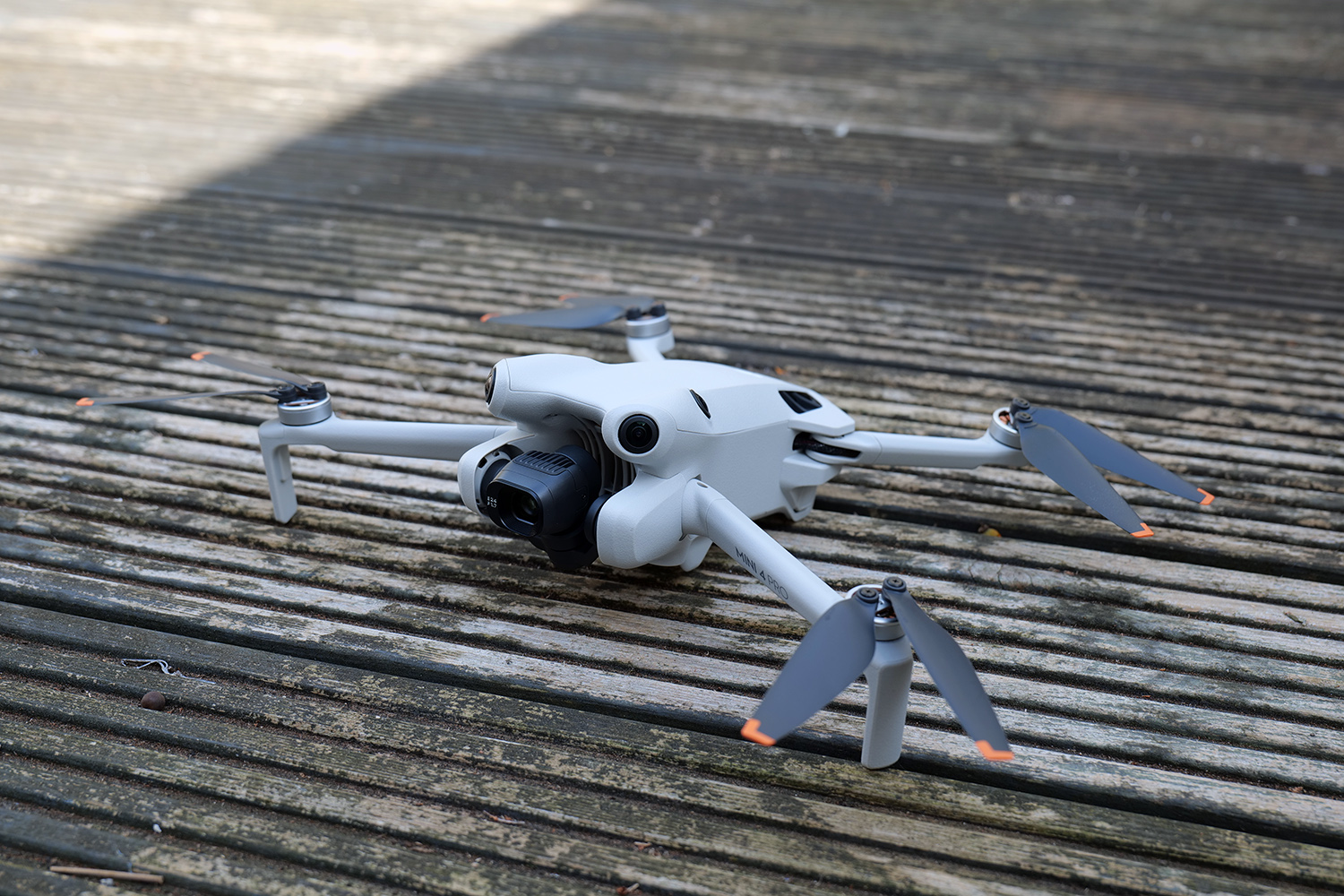
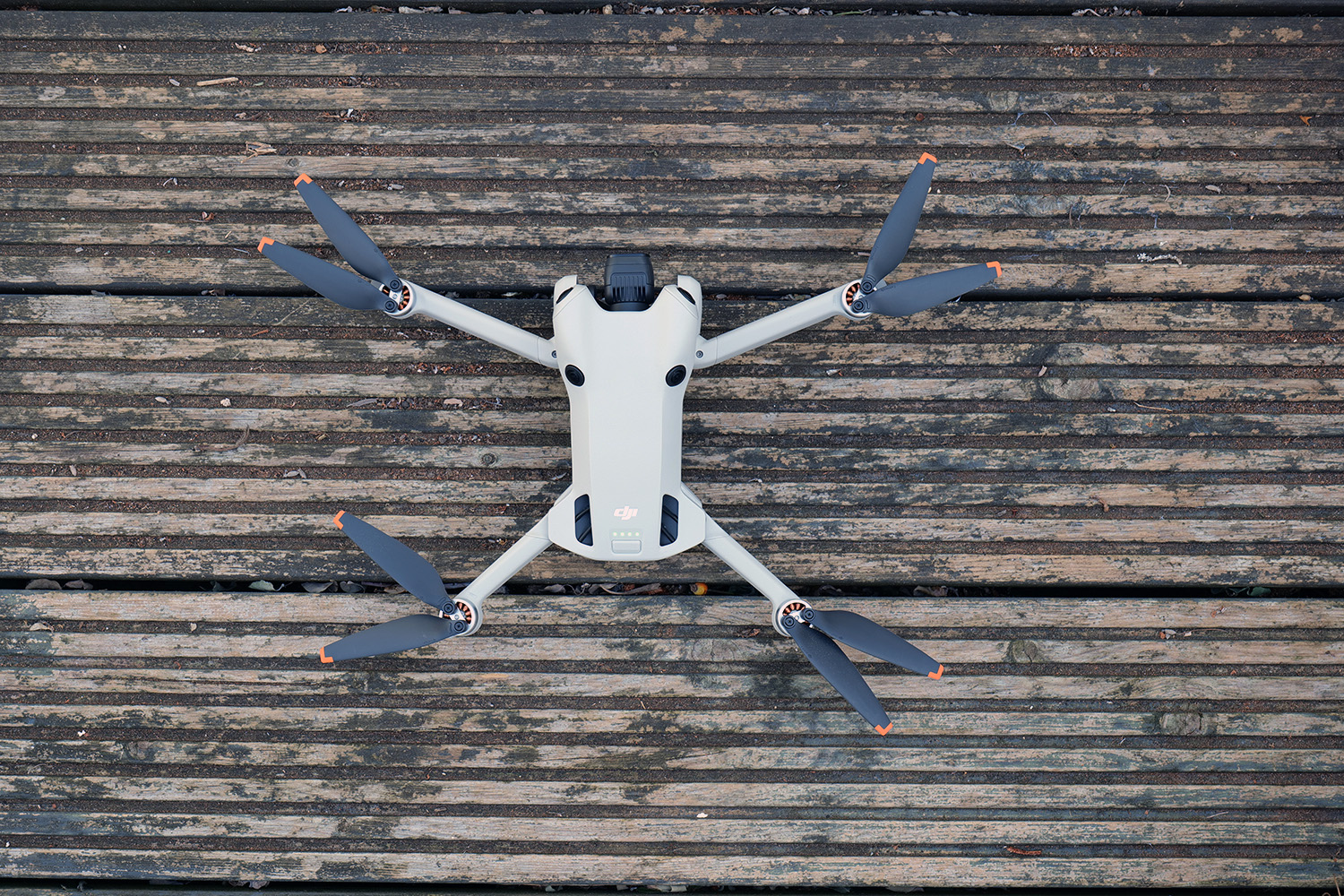
The most important thing about the Mini 4 Pro remains unchanged from the Mini 3 Pro. We’re talking, of course, about its weight. At under 250g, the Mini 4 Pro falls into an all-important bracket that means, for all intents and purposes, that the law considers it to be a toy drone.
In the UK, that means it can be legally be flown within 50m of uninvolved or unaware people (although not above large crowds) and within 150m of ‘residential, recreational, commercial and industrial sites’. Anything heavier isn’t allowed to do any of that so, in the UK at least, buying an ultralight drone like this makes a lot of sense if you’re a casual or hobbyist user. Unless you’re lucky enough to own or have access to massive tracts of private land to fly over, of course. Hopefully, these rather draconian laws will be changed to fall in line with more moderate EU and US regulations soon, but given who’s currently running the country we wouldn’t bet on it.
Despite its ultralight folding build, the Mini 4 Pro is well constructed and reasonably solid. It comes with two plastic covers to keep the more delicate parts (the camera gimbal and propellers) protected while the drone is folded up, so with these attached you should be able to toss it in a bag without worrying about damage. And given its size, it doesn’t need to be a big bag at all – in fact, you may well be able to fit it in a larger coat pocket.
Flight performance: Similar but safer


If you’re familiar with flying DJI drones, the Mini 4 Pro doesn’t change the record. It’s a quadcopter with good battery life (34 minutes of flight time on a full charge, which is the same as the Mini 3 Pro) and the ability to hover steadily in pretty blustery conditions (in winds of up to 22mph), and controllable via a classic and easy-to-master twin-stick method.
DJI’s flight and navigation software, which comes pre-installed on the RC 2 controller and via a mobile app if you’re using the RC-N2 controller, is simple and clear, and does a lot of the work for you. Take-off and landing can be handled automatically, location is tracked at all times via a map and distance data, and remaining battery life and flight time are clearly marked and constantly updated. If you can’t fly a drone using a setup this intuitive and streamlined, you really shouldn’t be flying a drone at all.
The RC 2 is a superb controller, incidentally: fast to boot up and connect, comfortable in the hands and blessed with a gorgeous 5in 1080p touchscreen that works well in bright sunlight. It’s not cheap, certainly, but it’s a big step above using your phone as the brains of a flight system.
The first of the Mini 4 Pro’s main upgrades over the Mini 3 Pro comes in the form of its obstacle avoidance setup. The Mini 3 Pro covered most directions with these vision-based sensors, which spot hazards and prevent the drone from flying into them, but the Mini 4 Pro goes full omnidirectional with sensors the front, back, sides, bottom and top of the drone. It’s a great setup, if not totally fool-proof: if you fly at night, the limited visibility renders it pretty much useless – so caution still needs to be exercised once the sun sets.
The improved obstacle avoidance boosts the ability of the Mini 4 Pro’s ActiveTrack system, which allows the user to drag a box around and object on the touchscreen and have the drone autonomously follow it as it moves. Dubbed ActiveTrack 360, it now enables the drone to circle around the subject, automatically dodging trees and the like as it does so. Fun stuff, and potentially useful for solo pilots who want to create some sweeping shots as they run, ride or drive through the landscape.
Image quality: 10-bit and slo-mo
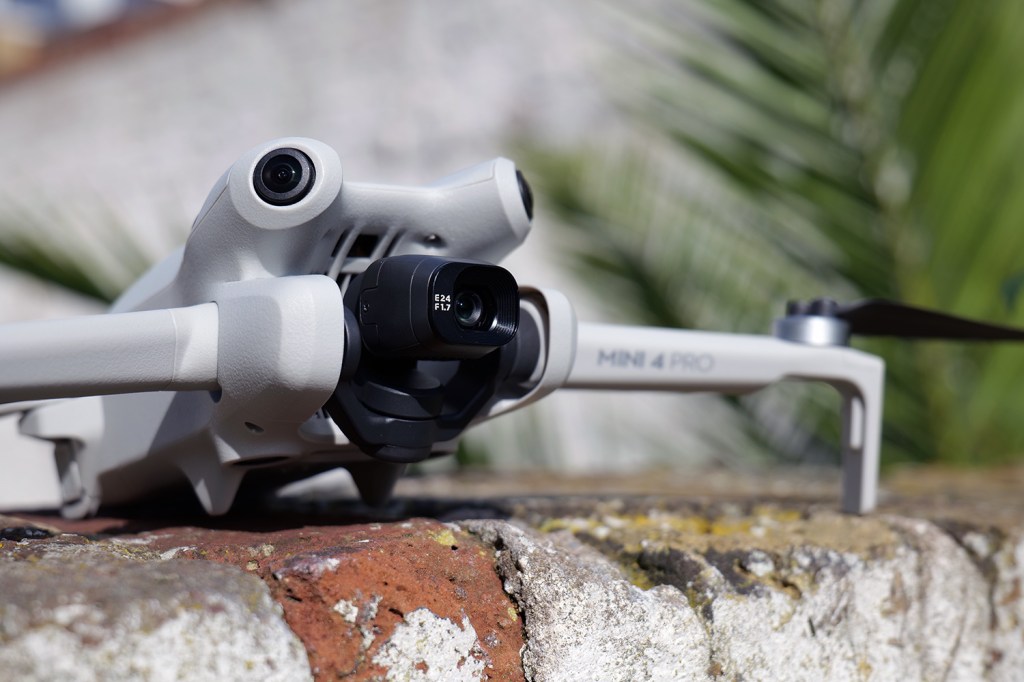
The second main upgrade over the Mini 3 Pro comes in the form of a revamped camera setup. This is on the software side of things than in the hardware (the Mini 4 Pro uses the same 48MP 1/1.3in CMOS sensor as its predecessor), but means the new drone can record slow-motion 4K at up to 100fps (or 1080p at 200fps), as well as capture regular footage with a 10-bit D-Log M colour profile. There’s also a new night mode (restricted to 4K/30fps) for boosting the clarity of after-dark video capture – and you can see this in action in the final three shots of our test clip.
We liked the Mini 3 Pro’s performance and the Mini 4 Pro’s is slightly but markedly better, so we like it even more. Image quality from both stills (which are technically 48MP but more akin to 12MP in real-world owing to the Quad Bayer sensor) and video is similar to that of a decent smartphone, so while you don’t quite hit the heights of clarity and noise control offered by the huge 4/3 sensor on the Mavic 3 models, you can achieve some excellent results given the drone’s size and weight.
Being able to record in D-Log M, then colour grading and correcting afterwards is going to be a bit hit with video enthusiasts, but even the standard video looks punchy and rich straight out of the camera.






Likewise, photos can be captured in RAW DNG for more editing scope, but simple JPEGs come out superbly too. And, as with the Mini 3 Pro, the camera can be physically rotated 90º to capture TikTok-ready 9:16 content – a nice shortcut that should find plenty of use among social media addicts.
DJI Mini 4 Pro verdict
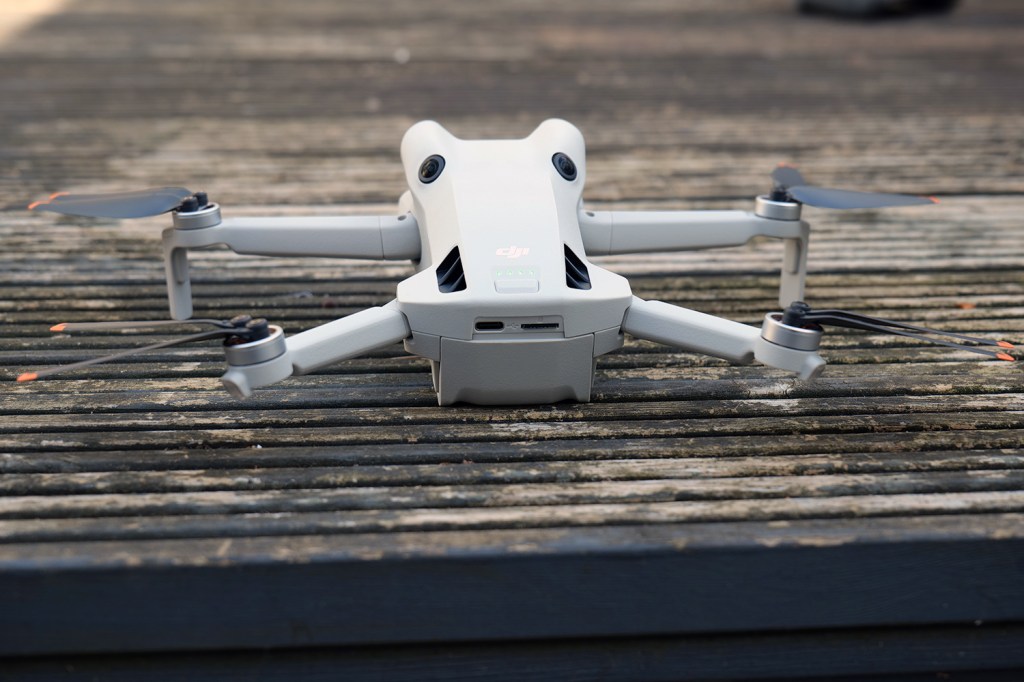
DJI isn’t shy about launching updated versions of its drones regularly, and while this rapid release schedule risks upsetting people who’ve just forked out for the last version only to find it almost immediately superseded by a better one, it does mean that things improve quickly when it comes to performance and usability.
That’s the case here, and the Mini 4 Pro is certainly a better drone than its predecessor. Those who already own a Mini 3 Pro probably don’t need to pull their wallet out, but owners of older DJI Mini models or newcomers shouldn’t hesitate. This is definitely the best sub-250g drone we’ve reviewed, and its safety features, auto flight functions and image quality make it a joy to use. It’s one of the few ultralight drones around that doesn’t feel full of compromises.
Stuff Says…
The most powerful sub-250g drone around, and the most practical drone for UK-based users
Pros
Restriction-dodging low weight
Strong camera performance
Easy flight controls and long battery life
Cons
Small doesn’t mean cheap
DJI Mini 4 Pro technical specifications
| Flight time | 34 minutes |
| Camera sensors | 48MP 1/1.3in CMOS |
| Video quality | 4K/100p, Full HD/200p |
| Storage | 2GB (internal), microSD support |
| Dimensions | 148x94x64mm (folded) 298x373x101mm (unfolded) |
| Weight | 249g |


